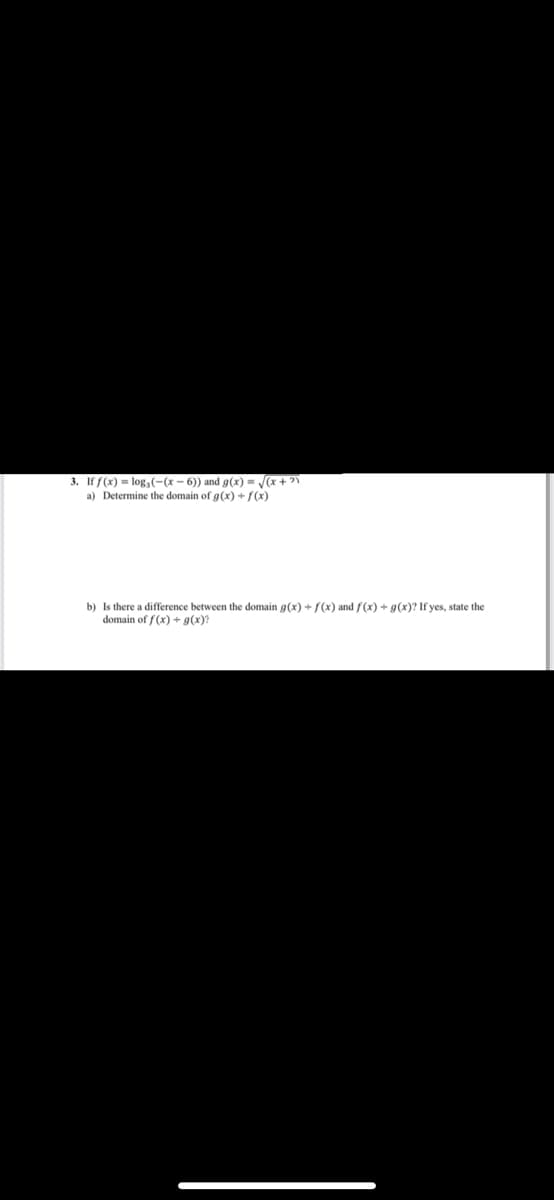3. If ƒ(x) = log₂(−(x − 6)) and g(x) = √(x + ²) a) Determine the domain of g(x) + f(x) b) Is there a difference between the domain g(x) + f(x) and f(x)+ g(x)? If yes, state the domain of f(x) + g(x)?
3. If ƒ(x) = log₂(−(x − 6)) and g(x) = √(x + ²) a) Determine the domain of g(x) + f(x) b) Is there a difference between the domain g(x) + f(x) and f(x)+ g(x)? If yes, state the domain of f(x) + g(x)?
College Algebra
7th Edition
ISBN:9781305115545
Author:James Stewart, Lothar Redlin, Saleem Watson
Publisher:James Stewart, Lothar Redlin, Saleem Watson
Chapter4: Exponential And Logarithmic Functions
Section4.3: Logarithmic Functions
Problem 5E: The natural logarithmic function f(x)=Inx has the ____________ asymptote x =____.
Related questions
Question

Transcribed Image Text:3. If f(x)=log,(-(x-6)) and g(x) = √(x +?\
a) Determine the domain of g(x) + f(x)
b) Is there a difference between the domain g(x) + f(x) and f(x) + g(x)? If yes, state the
domain of f(x) + g(x)?
Expert Solution
This question has been solved!
Explore an expertly crafted, step-by-step solution for a thorough understanding of key concepts.
Step by step
Solved in 2 steps with 1 images

Recommended textbooks for you

College Algebra
Algebra
ISBN:
9781305115545
Author:
James Stewart, Lothar Redlin, Saleem Watson
Publisher:
Cengage Learning

Algebra & Trigonometry with Analytic Geometry
Algebra
ISBN:
9781133382119
Author:
Swokowski
Publisher:
Cengage

College Algebra
Algebra
ISBN:
9781305115545
Author:
James Stewart, Lothar Redlin, Saleem Watson
Publisher:
Cengage Learning

Algebra & Trigonometry with Analytic Geometry
Algebra
ISBN:
9781133382119
Author:
Swokowski
Publisher:
Cengage